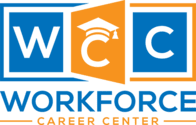Welding School Program
Ready to Make a Change? Get Started Today! Book a Campus Tour
PROGRAM OVERVIEW

Graduate in as few as 10 Months

Online and In-class Learning

Financial Aid is available for those who qualify

Classes Starting April 29th, 2024
- Combines classroom theory with hands-on welding trainings
- Students are trained using welding equipment in a shop environment
- Course covers Gas Metal Arc Welding (GMAW), Flux Core Arc Welding (FCAW), Oxyacetylene Cutting, and more
Welding Training Program
Workforce Career Center’s Welding Training Program is designed to provide students with the knowledge, skills, and hands-on training that is necessary to become an entry-level welder. The program focuses on providing students with a solid understanding of the fundamentals of welding.
The program covers metal cutting, brazing, Gas Metal Arc Welding (GMAW), Gas Tungsten Arc Welding (GTAW), Flux Core Arc Welding (FCAW), and welding safety.
Not only do students graduate understanding the fundamentals of welding, but they are able to put what they’ve learned into practice thanks to the hands-on training in a real-life welding environment offered by the program.
Even if you’ve never welded before, consider enrolling in the program as our instructors will guide you through the program no matter your skill level.
Our Welder Training Program is taught by experienced instructors with extensive experience in the welding field. Additionally, our Welding Training Course is hybrid, meaning the program combines online classes with both on-site classes and labs. Additionally, classes are available during both the day and evening, making it easier than ever before for students to complete and graduate from the program in less than one year.
Available at The Following Campuses
Gardena
Skills You Will Learn
The Welding Training Program provides students with a foundation via online classes and on-site lab training in a fully equipped welding lab. The Welding Program teaches students basic shop skills, how to read blue prints, and safe and efficient work practices. The core of this program is the required lab training, which provides students with hands-on experience in the lab.
Students are allowed to utilize the different welding techniques they’ve learned in the lab, placing their newly learned skills to the test. Students graduate from the program with skills and hands-on training necessary for a new entry-level career as a welder.
If a career as a welder interests you, consider enrolling in Workforce Career Center’s welding program. Contact us and one of our admissions team members will reach out and provide you with everything you need to know about enrolling in the program.
Welding Career Outcomes
Upon completing and graduating from the program, you will have the skills and training that employers are looking for when hiring for entry-level welding positions. The great thing about Workforce Career Center’s welding program is that it can be completed, and you can earn your diploma in as few as 10 months, placing you on the fast track to becoming a professional welder.
Although there are no formal education requirements to become a welder, obtaining a diploma will make your more marketable in a competitive job market. Furthermore, some employers tend to prefer candidates who have training and have completed a post-secondary education over inexperienced applicants who do not have formal training.
If you want to become a welder, consider enrolling in the Workforce Career Center Welding School to obtain your diploma and pursue a career as a welder.
As a graduate of the program, you may qualify for the following positions:
- Welder
- Solder
- Brazing and Machine Setter
- Operator
- Cutter
- Welder Fitter
- Welder Tender
About This Program
Workforce Career Center’s Welding Training Program is designed to provide students with the knowledge and hands-on training that they need to pursue a rewarding career in welding. First, students are lectured on the welding process, after the lecture, they’re assigned projects just as they would be in the real-world, providing them with invaluable training. The hands-on training in shop environment that the program offers prepares graduates of the program for entry-level welding positions.
Course List
Course
WD 110
WD 120
WD 130
WD 140
WD 150
WD 160
WD 170
WD 180
WD 190
Course Title
Welding Principles and Safety
Welding Blueprint Reading and Planning
Gas Metal Arc Welding
Shielded Metal Arc Welding
Flux Cored Arc Welding
Gas Tungsten Arc Welding
Welding Alloys
Oxy-Fuel Welding and Cutting Processes
Metal Fabrication and Lay-out
Welding Program FAQs
Welders use tools and specialized equipment to cut, melt, bend, and fuse metal materials for a variety of purposes. Their specific knowledge of different types of metals and welding techniques and tools needed to work with them makes them incredibly valuable for building with and making repairs to metal.
The Welding Training Program at Workforce Career Center provides students with the knowledge and skills needed for an entry-level position as a welder, solder, cutter, or operator, including metal cutting, brazing, Gas Metal Arc Welding, Gas Tungsten Arc Welding, Flux Core Arc Welding, and shop safety.
You do not need a college degree to become a welder, but the more experience and knowledge you can gain, the easier it will be to find a job in a competitive market. The skills and knowledge taught at Workforce Career Center will prepare graduates for entry-level positions in the field and give them a jump start to a rewarding career.
You can complete the welding training program in as few as 10 months and be prepared to begin an entry-level position as soon as you graduate.
The core of the welding program is the hands-on labs that allow students to practice new skills in person using real welding equipment. These required labs take place twice a week in either the morning or the evening.
You can enroll in the welding program by reaching out to our admissions team. They can explain the process in more detail and help answer questions along the way. You can reach them by phone, online form, or in person.
Graduates of this program would be qualified for entry-level positions as a welder, brazing and machine setter, solder, cutter, welder fitter, welder tender, or operator.
Yes, financial aid is available to those who qualify. Financial aid is available in the form of grants, scholarships, or student loans. Contact us to learn more about what financial aid options may be available to you.
While not required for employment, our program will help prepare you for the following optional certifications:
- Nationally Certified Medical Assistant, offered through the National Center for Competency Testing (NCCT).
- Certified Medical Assistant (CMA), offered through the American Association of Medical Assistants (AAMA).
- Registered Medical Assistant (RMA), offered through the American Medical Technologists (AMT).
Medical assistant training can qualify you for jobs that involve working directly with doctors, nurses, and patients within medical offices, clinics, labs, hospitals, and so on. Some of the entry-level positions that our graduates have obtained include medical assistant, optometric technician, optometric assistant, medical office assistant, chiropractic assistant, ophthalmic technician, and clinical assistant.
Yes, financial assistance is available to students who qualify. Workforce Career Center strives to help students put together financial plans for their education that may include a combination of loans, grants, scholarships, and other sources of aid. Additionally, Workforce Career Center offers a variety of special aid options for military veterans, active-duty military members, reservists, and their dependents. Learn more about Workforce Career Center’s financial aid options.

